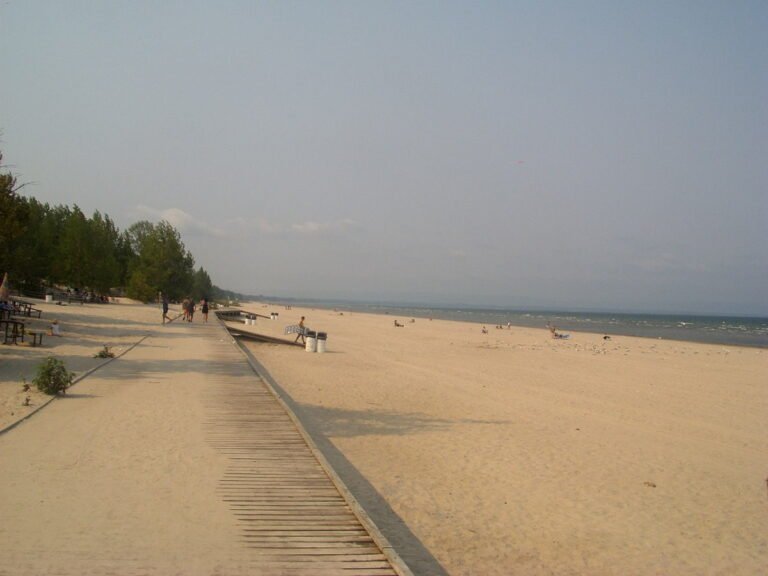What Is: Population of Immigrants in Canada
The population of immigrants in Canada, steadily growing over the years, has transformed the country into a mosaic of cultures and traditions. Welcoming people from around the globe, Canada boasts a unique blend of heritages that strengthens its national fabric. This diversity is most vibrant in cities like Toronto and Vancouver, where cultural influences are evident in everyday life.
Recent data from the 2021 Census of Population highlights that immigrants now constitute a substantial portion of Canada’s total population. The data below pertains to the year 2021.
This article aims to explore these statistics and provide a comprehensive overview of the immigrant population in Canada, presenting key data in a simple and engaging manner.

Canada Population per Regions
In Canada, the distribution of the population across its regions showcases the country’s vast and diverse landscape.
Ontario, the most populous region, is home to major urban centers like Toronto and Ottawa and contributes significantly to the national population, accounting for approximately 35%.
Quebec, with its unique cultural heritage, is centered around cities like Montreal and Quebec City, representing about 21% of the population.
British Columbia, known for its scenic beauty and the economic hub of Vancouver, also holds a substantial portion of the nation’s population, making up approximately 13%.
Alberta, with thriving cities such as Calgary and Edmonton, along with the Atlantic provinces, known for their maritime culture and smaller populations, contribute to the rich tapestry of Canada’s demographic makeup.
Below is the detailed data for each region, providing a comprehensive insight into Canada’s population distribution.
- Ontario: 14,223,942
- Quebec: 8,501,833
- British Columbia: 5,000,879
- Alberta: 4,262,635
- Manitoba: 1,342,153
- Saskatchewan: 1,132,505
- Nova Scotia: 969,383
- New Brunswick: 775,610
- Newfoundland and Labrador: 510,550
- Prince Edward Island: 154,331
- Northwest Territories: 41,070
- Yukon: 40,232
- Nunavut: 36,858
Understanding the Population of Immigrants in Canada as per the 2021 Census Report
- Immigrant Population: As of the 2021 Census Report, new immigrants in Canada numbered 8.3 million, constituting about 23% of the total population. That means that approximately one-quarter of the population were or had been landed immigrants or permanent residents in Canada.
- New Immigrants (2016-2021): During this period, Canada welcomed over 1.3 million new immigrants. A majority (over 91%) of these individuals became Canadian citizens, highlighting a strong trend towards naturalization.
- Non-Citizens in Canada: Around 3.2 million people were non-Canadian citizens, including permanent residents and non-permanent residents.
- Top Countries of Origin: Asia, including the Middle East, was the top source region, accounting for over 62% of new immigrants. This aligns with global migration trends where these two populous nations are often significant sources of international migrants.
- Leading Country of Birth: India was the birth country for one in five recent immigrants (20%), making it the top country of origin for recent immigration to Canada.
- Naturalization Rate: The data suggests a high rate of naturalization, with over 80% of eligible immigrants becoming Canadian citizens. This reflects Canada’s inclusive policies and the willingness of immigrants to integrate fully into Canadian society.
- Multiple Citizenships: There were over 3.7 million Canadian citizens with multiple citizenship, indicating a global and diverse citizenry.
- Age Distribution of Immigrants: The age distribution shows a young immigrant population, with over 10% being youths (15-24 years), over 64% being adults (25-54 years), and about 3% being seniors (55-64 years).
- Refugees: Between 2016 and 2021, 218,430 refugees were admitted as permanent residents, and close to 85,000 immigrants were recognized as protected persons, highlighting Canada’s role in offering refuge to those in need.
- Immigration Categories: Over half of the recent immigrants were admitted under the economic category, with significant portions coming through skilled worker programs and the Provincial Nominee Program. This reflects Canada’s focus on attracting skilled labor to contribute to its economy.
- Population Growth: Canada’s population increased from 36,991,981 in 2021 to 40,528,396 by October 1, 2023. This significant growth can be attributed partly to immigration.
Top 10 Places of Birth Reported by Immigrants in Canada
- India: 18.6%
- Philippines: 11.4%
- China: 8.9%
- Syria: 4.8%
- Nigeria: 3.0%
- United States: 3.0%
- Pakistan: 2.7%
- France: 2.0%
- Iran: 1.9%
- United Kingdom: 1.7%
Immigrant Population by Top 3 Countries of Birth for Each Continent
The largest groups of immigrants traditionally come from countries like India, China, and the Philippines, but there’s also a significant number from European countries, the Middle East, Africa, and Latin America.
Below are the highlights of the top countries of origin for each continent:
Europe
- United Kingdom: 464,135
- Italy: 204,065
- Poland: 135,030
- *Serbia: 31,925
Central America
- Mexico: 90,585
- El Salvador: 49,450
- Guatemala: 18,035
South America
- Guyana: 85,530
- Colombia: 80,570
- Brazil: 48,450
Caribbean and Bermuda
- Jamaica: 145,360
- Haiti: 99,945
- Trinidad and Tobago: 65,035
Asia
- India: 898,050
- Philippines: 719,580
- China: 715,830
Africa
- Morocco: 81,770
- Nigeria: 81,290
- Algeria: 79,660
Immigrant Population by Selected Places of Residence in Canada
In Canada, the distribution of the immigrant population varies across provinces, influenced by different economic landscapes.
Ontario, particularly in and around Toronto, is the most popular destination, drawing a majority of immigrants with its strong job market and well-established communities.
British Columbia, centered on Vancouver, also attracts a significant number due to its appealing economic opportunities.
Other regions, such as Alberta, Quebec, and the Atlantic provinces, also draw immigrants, albeit in smaller numbers, each offering unique opportunities and lifestyles.
Here is a breakdown of the immigrant population across all the provinces in Canada:
- Newfoundland and Labrador: 14,215
- Prince Edward Island: 11,755
- Nova Scotia: 71,480
- New Brunswick: 43,960
- Quebec: 1,210,200
- Ontario: 4,205,750
- Manitoba: 257,570
- Saskatchewan: 137,590
- Alberta: 970,740
- British Columbia: 1,425,265
- Yukon: 5,380
- Nunavut: 1,165
Top 10 Ethnic or Cultural Backgrounds of Canada’s Population
- Canadian: 5,677,205
- English: 5,322,830
- Irish: 4,413,120
- Scottish: 4,392,200
- French: 122 3,985,945
- German: 2,955,695
- Chinese: 1,713,870
- Italian: 1,546,390
- Indian: 1,347,715
- Ukrainian: 1,258,635
- *Serbian: 93,360
Related Articles
-

What is Canada Thanksgiving About?
Canada Thanksgiving is a special day marked by gratitude, family gatherings, and delicious food. It’s a time when kitchens bustle,… Read more
-

15 Things Invented in Canada That Changed the World
Canada is known for more than its vast land and scenic beauty; it’s also a hub of groundbreaking inventions, contributing… Read more
-

What Is: Population of Immigrants in Canada
The population of immigrants in Canada, steadily growing over the years, has transformed the country into a mosaic of cultures… Read more







